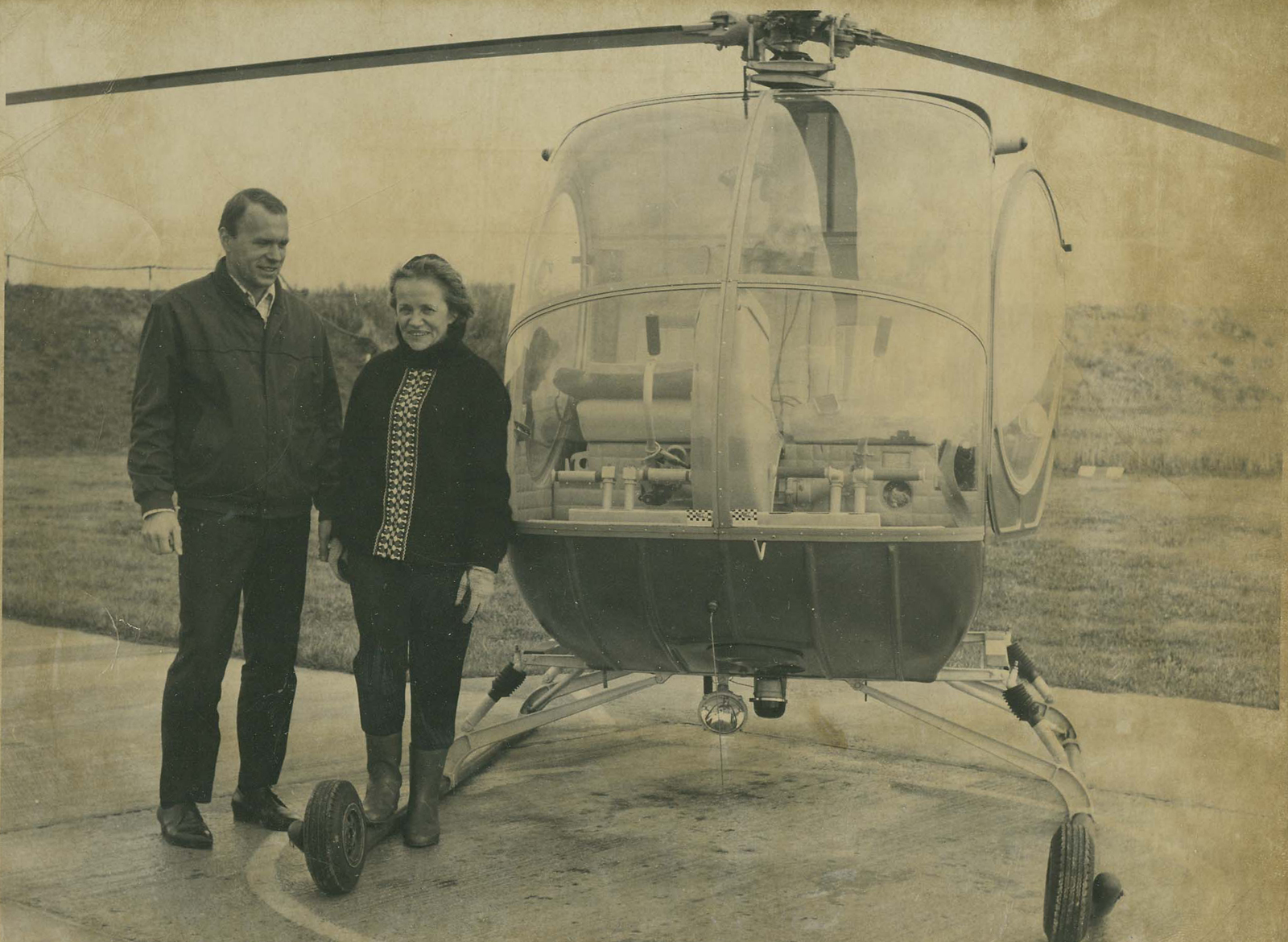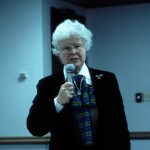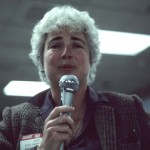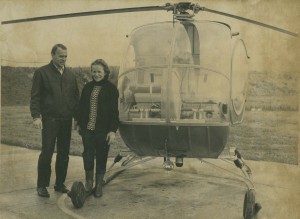
The first woman in the world to earn a helicopter rating was Hanna Reitsch, Whirly-Girl #1. Reitsch flew the first true vertical flight machine, a Focke Achgelis helicopter, in 1938. Development of the commercial helicopter halted during World War II.
By Henry M. Holden
If you fly helicopters, or would like to, Whirly-Girls want you.
Whirly Girls was the idea of Jean Ross Howard, a native of Washington, D.C., who founded the group in 1955. Her goal was to develop an international organization where female helicopter pilots could provide a support network, find camaraderie and share information. Howard was one of 13 charter members representing women helicopter pilots from France, Germany and the United States. This talented, foresighted and gracious humanitarian served as the Whirly Girls’ chairman of the board, until her death in 2004.
In 1954, Howard approached Lawrence Bell, producer of the first commercial helicopter, about teaching her to fly a helicopter. At the time, Howard was the assistant to the director of the Helicopter Council Aircraft Industries Association, in Washington, D.C. She felt she could do her job better if she knew how to fly a helicopter.
Bell invited her to take lessons in Fort Worth, Texas. Just 18 days later, Howard passed her check ride. When she landed, her instructor said, “Well Jean, you’re a real whirly girl now.” The name stuck.
Howard decided to find out just how many women in the world flew helicopters and found 12 others. The Whirly Girls started as an informal group without officers, dues or records of meetings. But the women soon realized that if they were to stay in touch, someone needed to start keeping records and tracking correspondence. The choice was obvious: Jean Ross Howard, WG # 13. From those humble beginnings, the organization has grown.
In the 1970s, a leading Florida newspaper ran a feature article about some Whirly-Girls. The headline read, “Whooping Cranes and Whirly-Girls have two things in common. Both can fly. Both are rare.” Today, it’s no longer rare to find women flying helicopters. As of February 2007, 1,455 women representing 43 countries proudly represented the Whirly-Girls.
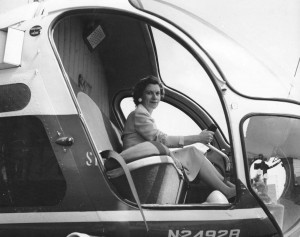
Jean Ross Howard, WG # 13, coined the word that describes their meetings. “We don’t hold meetings,” she said. “We have ‘hoverings.’”

Lawrence Bell, producer of the first commercial helicopter, taught French pilot Jacqueline Auriol to fly his Bell 47. Auriol is WG # 8.
|
Cathy Adams, WG # 413, the former Whirly-Girls vice president of operations, is the newly elected president of Whirly-Girls, International.
“We’re presently in a state of administrative change,” said Adams. “We want to become a more focused and professional organization. We need to create a vision and a strategy for the future—one that develops a plan to encourage more women into helicopter aviation. This is a big team effort. We sit down twice a year and talk not only about this business but also about how we can increase our scholarships. We want the industry to be more receptive to women—not just here, but also to women around the world.” “Our board meetings generate a lot of discussion about how to expand our volunteer circle,” she said. “We’re a diverse group, spread out all over the world, and our lives are busy with jobs and family obligations. We need help for the life of our organization. We need enthusiastic volunteers to make us a strong and viable association for our growing membership.” |
The organization depends on volunteers.

Evelyn Bryan Johnson is WG # 20. Born in 1909, she has shattered records with nearly 58,000 flight hours and has trained more than 3,000 pilots. She will be inducted into the National Aviation Hall of Fame in July.
Scholarships are an important part of the organization’s educational agenda.
“We were founded on the principle of education,” said Adams. “We really have to put more money into scholarships. That’s going to be one of our biggest challenges over the next couple of years.”
The scholarship program started in 1968, in memory of Doris Mullen, WG # 84. She was a dedicated and professional pilot who died in a fixed-wing aircraft accident. The scholarship program has grown from a single $500 scholarship to 10 different scholarships valued in excess of $45,000. Today, Whirly-Girls has the largest source of scholarships for female helicopter pilots.
“For the next few years, we’re going to focus on fundraising,” said Adams. “The cost of a helicopter rating keeps getting higher and higher, and we’ve had to increase the value of our scholarships. We discovered that the amount we were giving in scholarships wasn’t enough to cover the cost of training.”
The scholarship fund is replenished through the efforts of the Whirly-Girls Men’s Auxiliary and the Whirly-Girls Ladies Auxiliary, now collectively renamed the Auxiliary Power Unit. Funds are also raised at their HeliExpo merchandise booth and in the silent auction, which takes place at the annual Hovering gathering. Whirly-Girls funds three scholarships, at $6,000 each. Fixed base operations and manufacturers like Bell, Eurocopter, FlightSafety International, Vortex, Robinson, Helicopter Services International and Northeast Helicopters generously contribute funds, simulator time and other on-site training.
“Part of our educational process is letting people know that good jobs are available in helicopter aviation,” said Adams. “People have to research what areas of aviation they want to try. The glamour jobs are with the airlines, but a lot of people who haven’t had exposure to it don’t see how they could fit into helicopter aviation.”
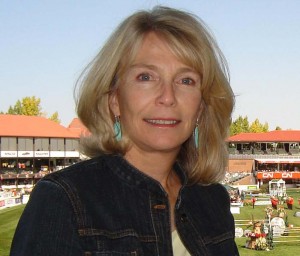
Cathy Adams, WG # 413 and Whirly-Girls president, is a research psychologist with the Research and Technology Directorate at NASA Langley Research Center.
Whirly-Girls is an official affiliate member of the Helicopter Association International, and membership is open to any woman with a helicopter license. Additionally, the Whirly-Girls Auxiliary is available to those who aren’t eligible for regular membership.
For more information, visit [http://www.whirlygirls.org].
- Dr. Dora Strother, WG # 27, broke a Russian altitude record climbing to 19,406 feet. She set another record by flying in a straight line for 404.36 miles. The former WASP is one of only two women qualified to fly the B 29 bomber.
- In 1988, Enid C. Kasper, WG # 460, did a scientific survey of women helicopter pilots. Previously, no data had ever been collected on the psychological and physiological profile of a female helicopter pilot.











